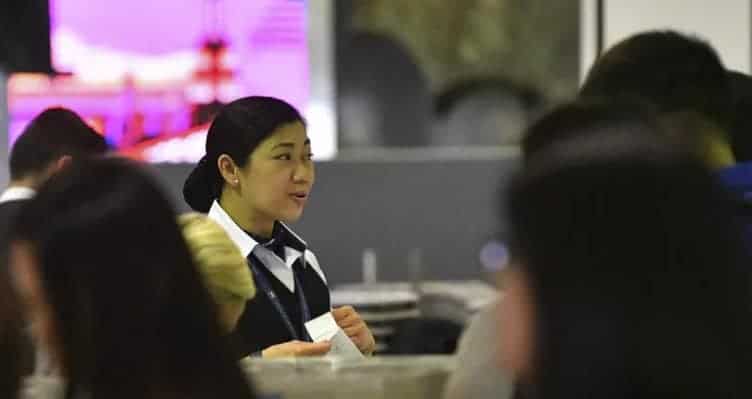The immigration department doesn’t keep a record of how many people apply for asylum at Australian airports, and how many are turned away. Documents released under Freedom of Information show a lack of accountability and oversight by Australian immigration officials with regard to people who request asylum at airports.
This means the ultimate decision to admit or deny an asylum seeker entry into Australia rests with the Border Force official who interviews them. Without oversight, an asylum seeker could be turned away and sent back to a country where they may be at harm, after being interviewed behind closed doors and without access to lawyers.
Last week, ABC’s Four Corners reported that two Saudi women were turned back at Sydney Airport after letting customs officers know they intended to apply for asylum. This has led to concerns Australian Border Force officers may be deliberately targeting and blocking Saudi Arabian women, who they suspect may apply for asylum, from entering the country.
Until 2014, a person could apply for a permanent protection visa before being cleared at customs, also known as immigration clearance. However, amendments passed in 2014 mean those stopped before being cleared can only apply for a three-year temporary protection visa or a five-year safe haven visa.
Had the two women not disclosed their intention to seek asylum at the airport, they would generally have been cleared at customs and allowed to enter Australia. They would be able to apply for a permanent protection visa after leaving the airport.
But by making an asylum claim at the airport, they were subsequently detained and then deported from Australia without a chance to apply for protection, or access to lawyers, in violation of Migration Act.
The ABC report suggested at least 80 Saudi women have sought asylum in Australia in recent years, many of them fleeing Saudi Arabia’s male guardianship laws, which allow their husbands, fathers, brothers, uncles and sons to control their lives.
A response from the Department of Home Affairs to a Freedom of Information request for the number of individuals who have made protection claims before, or at, immigration clearance at airports since 2008, said:
the location of the applicant in Australia at the time of lodgement … is not relevant to the assessment of the applicant’s asylum claims, and therefore is not recorded in the Department’s database. As such, the Department does not hold existing documents as falling in the scope of the request.
But this can’t be correct given the disparity between the safeguards available before and after an asylum seeker clears customs.

Australia has non-refoulement obligations under the 1951 Refugee Convention, various human rights treaties and customary international law. These prohibit the return of asylum seekers to places where they would face certain types of persecution or harm.
This extends to returning asylum seekers to transit countries where they may fear harm, or be at risk of being returned to their home country where they fear harm.
As part of the non-refoulement obligation, Australia must fairly and efficiently assess the claims of any person who applies for asylum under its territory or jurisdiction. Australia may not remove, or refuse admission at the border to, an asylum-seeker while considering that individual’s claim.
The demarcation of immigration clearance zones, or international zones has no consequence to Australia’s obligations under international law.
The Department of Home Affairs sets out the procedures to follow when an asylum claim is made at immigration clearance. The policies – which cannot be accessed publicly, but we have provided screenshots here – require that “if the person raises protection related claims, the interviewing officer should interview the person for a second time and explore the protection claims”.
If the person “makes a prima facie protection claim that is not considered to be ‘far-fetched and fanciful’, they are considered to be a person who potentially engages Australia’s non‑refoulement obligations” and must be permitted to enter Australia.
We do not know whether the department followed its own policies in the case of the two Saudi women. The interviews took place behind closed doors, and the minister has not made a comment on the cases. Even if the policy was followed, it still leaves much discretion to the interviewing officer.
There are no clear standards that must be followed when determining whether a claim meets the threshold of not being “far-fetched and fanciful”. The words are not found in the Migration Act, or the Migration Regulations, which govern migration determinations.
If Australia returned these women without a proper consideration of their asylum claims, it will be in breach of its international obligations. The failure to keep or share these statistics compounds the lack of accountability.![]()
___________________________________________
By Asher Hirsch, PhD Candidate, Monash University; Daniel Ghezelbash, Senior Lecturer, Macquarie Law School, Macquarie University, and Regina Jefferies, Scientia PhD Scholar, UNSW
This article is republished from The Conversation under a Creative Commons license. Read the original article.
TOP IMAGE: BRENDAN ESPOSITO/AAP/THE CONVERSATION












